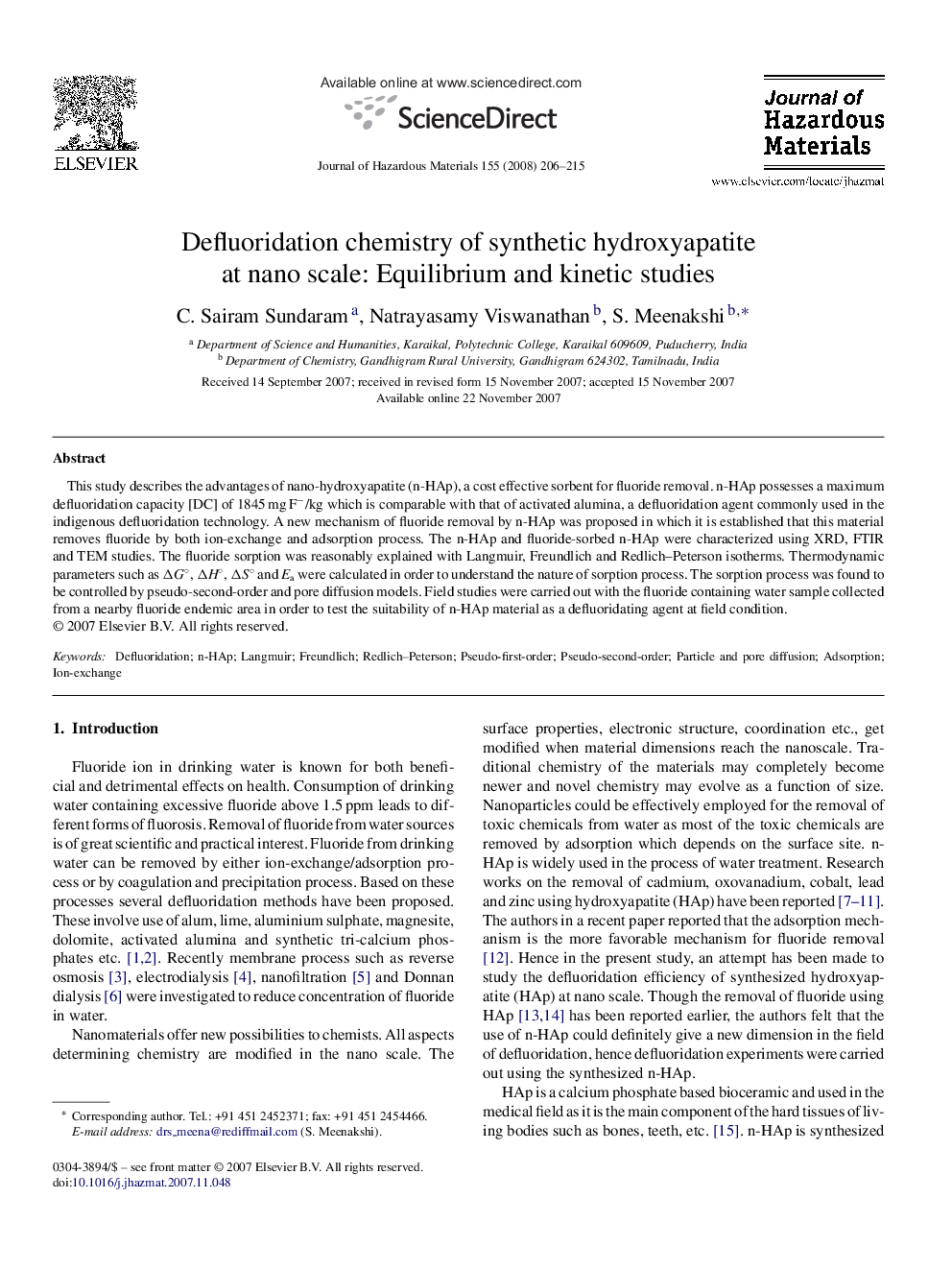| Article ID | Journal | Published Year | Pages | File Type |
|---|---|---|---|---|
| 583420 | Journal of Hazardous Materials | 2008 | 10 Pages |
Abstract
This study describes the advantages of nano-hydroxyapatite (n-HAp), a cost effective sorbent for fluoride removal. n-HAp possesses a maximum defluoridation capacity [DC] of 1845 mg Fâ/kg which is comparable with that of activated alumina, a defluoridation agent commonly used in the indigenous defluoridation technology. A new mechanism of fluoride removal by n-HAp was proposed in which it is established that this material removes fluoride by both ion-exchange and adsorption process. The n-HAp and fluoride-sorbed n-HAp were characterized using XRD, FTIR and TEM studies. The fluoride sorption was reasonably explained with Langmuir, Freundlich and Redlich-Peterson isotherms. Thermodynamic parameters such as ÎG°, ÎH°, ÎS° and Ea were calculated in order to understand the nature of sorption process. The sorption process was found to be controlled by pseudo-second-order and pore diffusion models. Field studies were carried out with the fluoride containing water sample collected from a nearby fluoride endemic area in order to test the suitability of n-HAp material as a defluoridating agent at field condition.
Keywords
Related Topics
Physical Sciences and Engineering
Chemical Engineering
Chemical Health and Safety
Authors
C. Sairam Sundaram, Natrayasamy Viswanathan, S. Meenakshi,
